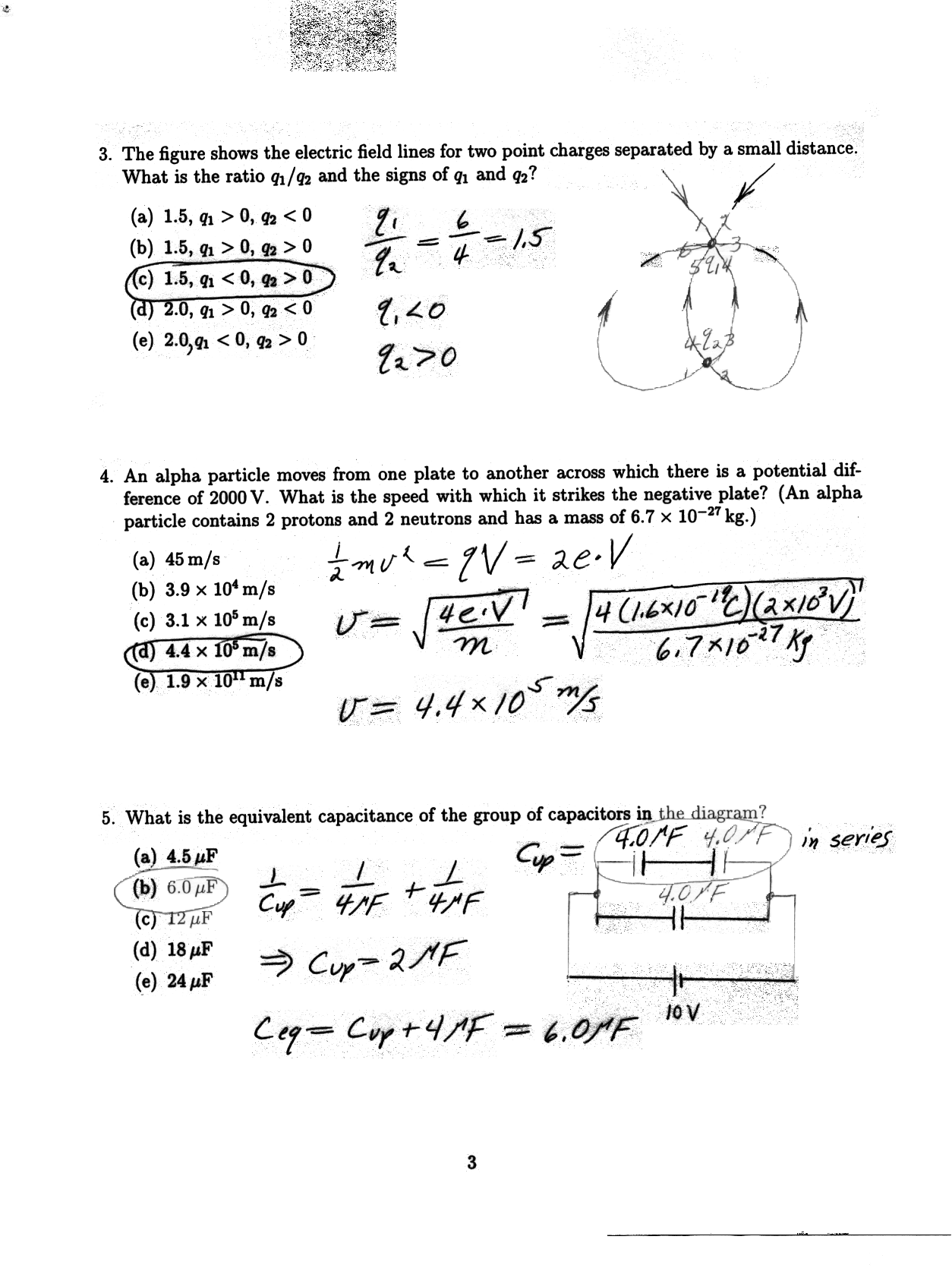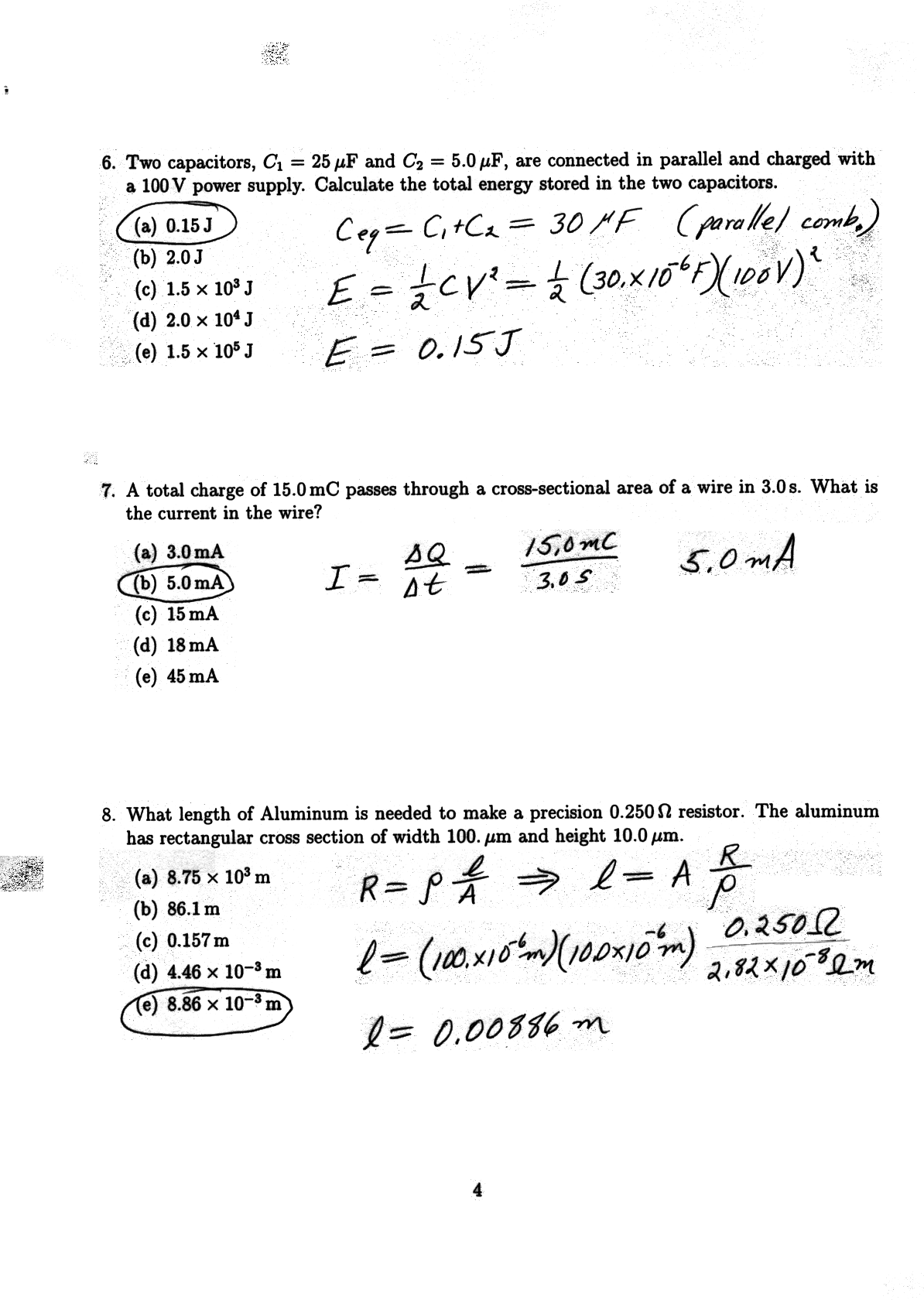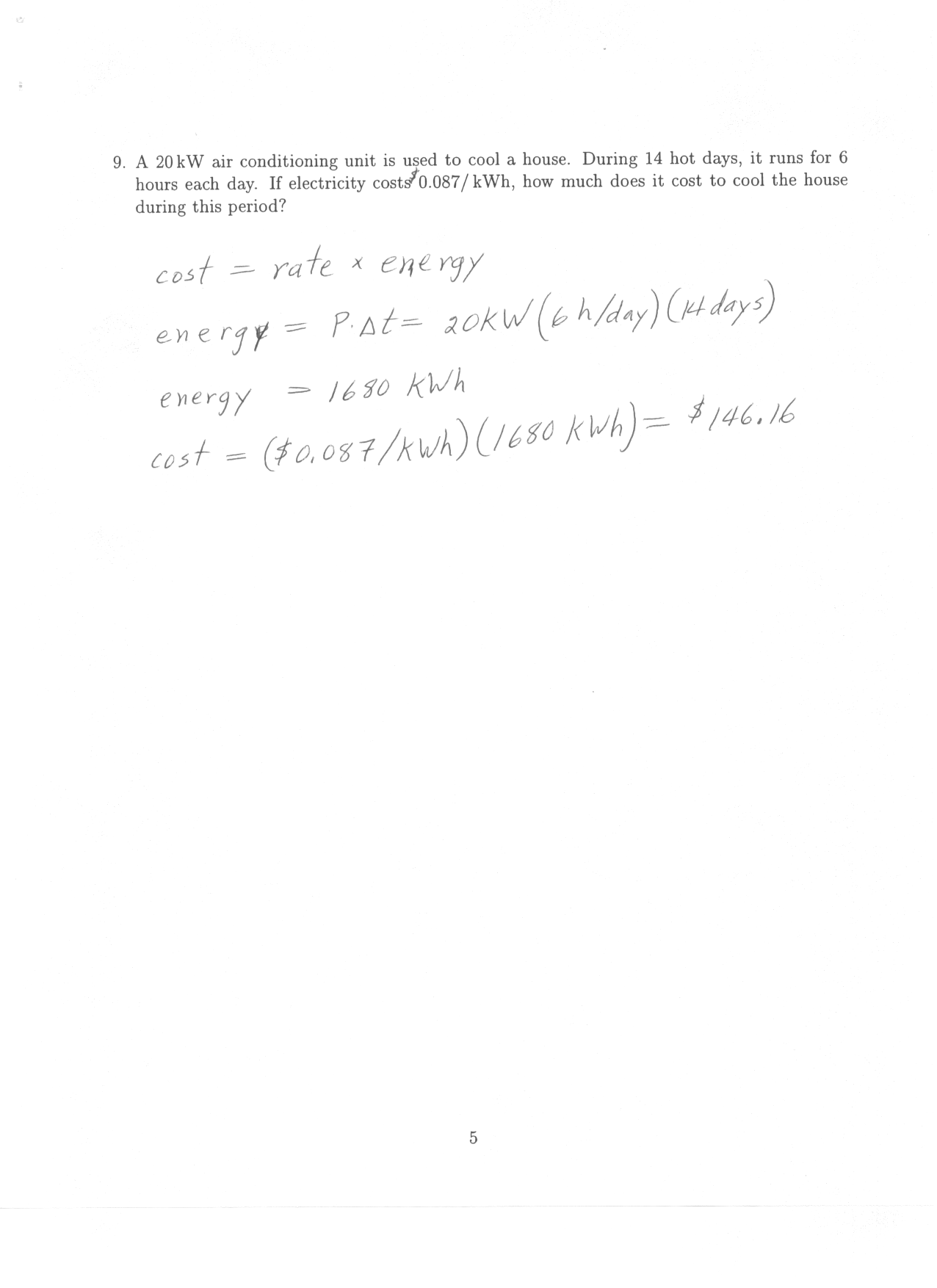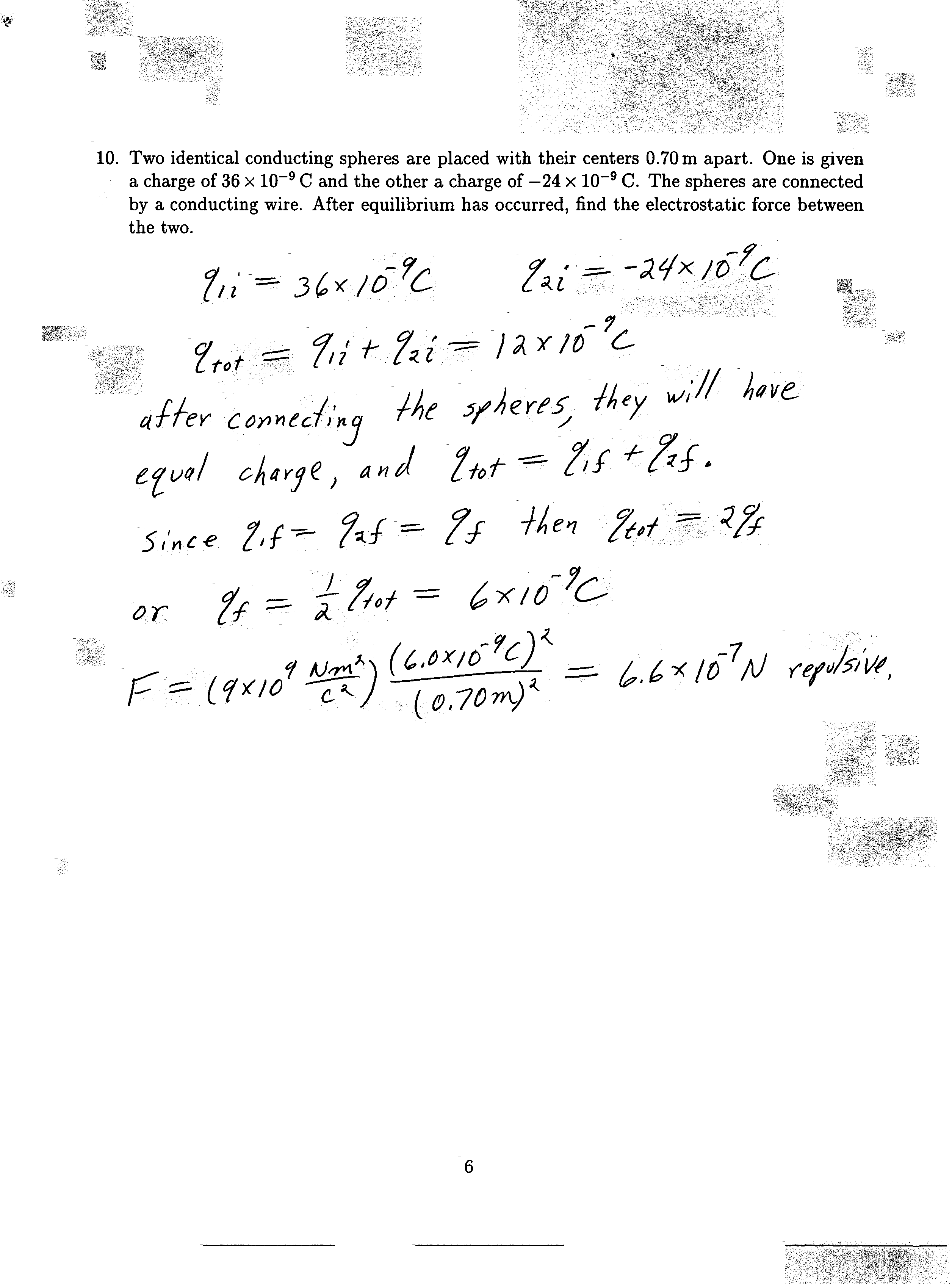The first exam will cover the material in chapters 15, 16, and 17. Specifically, it will cover topics from sections 15.1 - 15.6, 15.10 (electric flux only), 16.1 - 16.4, 16.6 - 16.9, 17.1-17.5, and 17.7.
The exam is closed book and closed notes. Remember to bring a calculator.
The exam will begin at 10:40 and end at 11:35am.
The exam will consist of 10 questions. Of these, 8 or 9 will be multiple choice (you must show some work to get credit), and the remainder will ask you to work out an answer. Each question will be worth 2 points, for a total of 20 points on the exam. The exam counts for 20% of your grade, so each point is 1% of your final grade.
The following equations and constants will be given on the exam.
| F = k q1 q2 / r² | E = k q / r² |
| DPE = -qEd | DV = DPE / Q |
| DV = -Ed | V = k q / r |
| W = F s cosq | F = E A cosq |
| C = Q / DV | C = e0 A / d |
| Ceq = C1 + C2 + ... | 1/Ceq = 1/C1 + 1/C2 + ... |
| Estored = ½QDV = ½ CDV² = Q² / 2C | |
| I = DQ / Dt | I = n q vd A |
| DV = I r | R = r l / A |
| r = r0 [1 + a(T - T0)] | R = R0 [1 + a(T - T0)] |
| P = IDV = I² R = (DV)² / R | 1 kWh = 3.60×106 J |
| k = 9×109 N m²/C² | e0 = 8.85×10-12 C²/N m² |
Note that, although the equations are given, you must remember what they stand for and how to use them. For instance, you must remember that the proper formula for combining capacitances in parallel is Ceq = C1 + C2 + ..., and that 1/Ceq = 1/C1 + 1/C2 + ... is the equation for combining capacitances in series.
You are responsible for knowing concepts that go along with the material. You should know that the electrostatic force between like sign charges is repulsive, the rules for drawing electric field lines, and the special properties associated with conductors.




 © Robert Harr 2000
© Robert Harr 2000